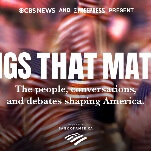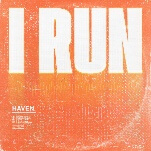Does Cheap Trick still command a stage 43 years on?

Katie Rife: My musical tastes have always leaned on the “middle-aged record store clerk” side (thus my undying affection for The Replacements), but for some reason it took me until recently to get into Cheap Trick. Now that they’re being inducted into the Rock And Roll Hall Of Fame, they’ve got a little more cachet. But they always struck me as an odd combination of mainstream classic rock and hipster cult band, kind of like how Fleetwood Mac has become cool again in the past couple of years.
The crowd at the Rock And Roll Hall Of Fame show at the Metro (a mid-sized club here in Chicago) on April 1 reflected that, I thought. There was the older local crowd who remembered seeing them in the ’70s, the diehard fans who traveled from across the country—one woman I talked to from Virginia said she had seen them 75 times that she could remember—and a smattering of young people who seemed to really dig them musically. Mike, you’ve seen Cheap Trick more than a dozen times. Has the demographic changed over the years? And why do you think people are so devoted to this particular band?
Mike Vanderbilt: I probably first heard Cheap Trick on a VHS copy of Up The Creek, or maybe on MTV or VH1 when “Don’t Be Cruel” was in perpetual rotation. Then, when I was 14, I heard them on the Heavy Metal soundtrack. And “Surrender” and “I Want You To Want Me” were always staples of classic rock radio. Most of my friends at that point were into what I saw as dull, plodding classic rock, like Led Zeppelin and The Doors, or the grunge and post-grunge that was on the radio in the mid-’90s. Cheap Trick split the difference between the Ramones and the ’70s AM pop that I loved; I was attracted to the big hooks and tempo, but I also liked things that were kind of weird and cultish. So they really felt like “my band,” since nobody in my high school was that into them.
However, unlike other “classic rock” bands, Cheap Trick retained its personality over the years. It wasn’t like Chicago, still cranking out records even though the only original member may have been one of the trombone players. I have certainly seen a change—and maybe it’s from my circle expanding, or from playing in bands—in the perception of Cheap Trick, from a dorky AOR act to effortlessly cool. It certainly helps that even 20 years or so after their heyday, their live shows were (and still are) exciting visually and aurally. I’ve seen them plenty of times over the years, but this was your first. What’d you think of the show?
Katie Rife: It surprised me in some ways, but not really in others. As I expected from listening to their records, Rick Nielsen’s guitar playing really stood out. He’s an incredible guitarist, and I found it delightful that he brought out a different guitar for every single song, including that massive five-headed guitar he brought out during the encore. You could tell that thing was heavy.
Robin Zander’s vocals and stage presence came across more heavy metal live, which was a surprise to me; I get the “hair metal” comparisons now, which is something I never understood just from listening to the records. I was also surprised at the amount of time Tom Petersson had in the spotlight—a long bass solo, and then singing a cover of “I’m Waiting For The Man.” It made me wonder: In a lot of bands, all these big personalities would lead to a clash of egos, and the band would break up, or keep going with just one or two original members. But the whole thing came across as fun instead of pompous “rock star” posturing, and with one big exception—drummer Bun E. Carlos—Cheap Trick is still together. Does each member always get their time to shine at the shows you’ve been at? If so, do you think that’s helped the band stay together so long?
Mike Vanderbilt: Perhaps it’s their “Midwestern-ness.” Two other bands that I love, The Replacements and Guided By Voices, have the same fervent following that I’ve noticed in Cheap Trick fans. Perhaps I just notice this because I’m in the midst of it, but there’s a “fuck L.A., and fuck New York, too” attitude among these bands’ Midwestern fan bases.
I think it may be Robin Zander’s look that brings that “hair metal” vibe. Record companies in the ’80s didn’t know how to market Cheap Trick: With two long-haired sex symbols and two goofballs—which, the more I think about it, was a look they probably cultivated on purpose—and big rock sound, they appeared to fit in better with Poison than The Clash. That personality is one of the big things that has always made Cheap Trick stand out: In a lot of bands, particularly from that era, each member is replaceable. How many members has Foreigner gone through? Could you pick any of them out of a lineup? As far as egos go, I once asked Petersson why he doesn’t sing more, as it’s always a treat when he does the Velvet Underground medley or “I Know What I Want” off of Dream Police. He replied that “it’s hard to compete with Robin.” There’s certainly some ego, but I think each member respects what the other guys bring to the party.
And yeah, Carlos is gone now, but Petersson left for a brief time in the ’80s. And the band never necessarily held auditions for their replacements. After Petersson’s departure in ’80, Pete Comita stepped in, and after him Jon Brandt; both of them had played around Chicago in the ’70s in the oft-forgotten d’Thumbs and were from the same “scene” as Cheap Trick. And—going back to the way the band always marketed themselves—both Comita and Brandt could be described as “a Tom Petersson type.” Comita, despite his brief tenure, even made it to the Cheap Trick Viewmaster slides. As far as drummers go, Daxx is literally keeping it in the family, being Rick Nielsen’s kid; he also sings harmonies (perhaps covering some of Rick’s parts).








































